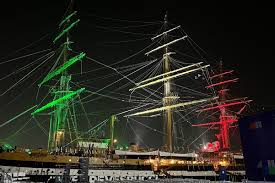 The Government of India has cancelled the original deal for 126 Dassault Rafales and is pursuing a truncated deal for 36 aircraft (worth two squadrons). This gives the Indian Air Force an opportunity to pursue a number of avenues to meet its shortfall of fighter aircraft. The lack of clarity and commitment on part of the Government gives the Indian Air Force time to indulge in some long-term integrated procurement planning instead of short term quick-fix solutions like the current Rafale deal.
The Government of India has cancelled the original deal for 126 Dassault Rafales and is pursuing a truncated deal for 36 aircraft (worth two squadrons). This gives the Indian Air Force an opportunity to pursue a number of avenues to meet its shortfall of fighter aircraft. The lack of clarity and commitment on part of the Government gives the Indian Air Force time to indulge in some long-term integrated procurement planning instead of short term quick-fix solutions like the current Rafale deal.
Even if the Rafale deal for the two squadrons comes through, it will only temporarily arrest the decline of squadrons for the IAF. The long-term answer may just lie in the home-grown Advanced Multi-role Combat Aircraft being developed by the Aeronautical Development Agency (Bangalore) rather than in the expensive Western solutions.
India’s experience with the indigenous Light Combat Aircraft has been long and tenuous, and the aircraft is yet to enter the IAF in numbers. Its development has established the technological infrastructure of aircraft manufacturing which includes design expertise, testing and production facilities. This can be leveraged for the development of India’s next indigenous fighter aircraft, the AMCA. The AMCA programme, still very early into its development phase, holds immense potential to replace a wide range of IAF aircraft in the medium-weight multi-role category.
The aircraft will be a generation ahead of what the IAF currently fields and will increase the force’s capabilities quite dramatically. The AMCA, which is conceptualised around the IAF’s air staff requirements issued in 2010, will incorporate a high degree of stealth, a high internal and external weapons payload and high internal fuel capacity.
The Aeronautical Development Agency is designing the AMCA as a platform with high survivability to meet the challenges of future air defence environments through a combination of moderate stealth, electronic warfare capability, advanced avionics and performance capabilities. The design philosophy seeks to balance aerodynamics and stealth capabilities. The AMCA will also be optimised to seamlessly swing between air-to-air and air-to-ground missions. The much-touted Dassault Rafale, meanwhile, is a 4.5 generation aircraft lacking stealth capabilities and performance of much advanced fifth generation aircraft.
The AMCA programme is expected to receive approval at the end of 2015 after the programme definition and feasibility are completed in the coming months. Crucial for the programme’s success will be its timeline for development and production. Unlike the Life-Cycle Analysis in the 1980’s, when India decided to build a fourth generation fighter aircraft from scratch, the AMCA will be able to draw on previous experiences and even build on already available technologies.
The ADA must avoid the pitfall of developing technologies from scratch which have led to years of delays in the Life-cycle assessment programme. Known shortfalls in developing aero-engines other sub-systems must be tackled by roping in the private sector and foreign companies till indigenisation is feasible.
Strategic autonomy demands that India reduce it’s dependence on arms imports. Simply transferring of technology on technology-intensive weapons systems does not reduce dependency. For Make in India to be a success, we need to start building the capacity to develop and produce critical platforms like fighter aircraft ourselves, and not just buy abroad and build in India.
We have built numerous fighter aircraft from the Mig-21, Jaguar to the Sukhoi-30MKI through this route, absorbing little in the way of indigenous development capabilities. Given that it has not happened in the last few decades it is unlikely to happen now.
The IAF has long been accused of lacking strategic long-term planning as it has always viewed itself as a tactical appendage to other services. In backing the development of a fifth generation indigenous fighter aircraft, the IAF has the opportunity to break free from a tactical game of numbers in defence planning that plagues the Indian military.
The AMCA fits in neatly in between the light-weight category LCA and the heavier Sukhoi-30MKI and the fifth generation fighter aircraft being developed by India and Russia. It will also be better positioned technologically to counter Chinese stealth aircraft programmes which are likely to eventually find their way to Pakistan.
The reduced the possibility of full-fledged war or a two-front war and gives the IAF the opportunity to focus on technology intensive platforms like the AMCA without having to cater to strategies based on numbers.
Courtesy : ORF – Let us get our wings at home
Author Profile
- India Writes Network (www.indiawrites.org) is an emerging think tank and a media-publishing company focused on international affairs & the India Story. Centre for Global India Insights is the research arm of India Writes Network. To subscribe to India and the World, write to editor@indiawrites.org. A venture of TGII Media Private Limited, a leading media, publishing and consultancy company, IWN has carved a niche for balanced and exhaustive reporting and analysis of international affairs. Eminent personalities, politicians, diplomats, authors, strategy gurus and news-makers have contributed to India Writes Network, as also “India and the World,” a magazine focused on global affairs.
Latest entries
 India and the WorldNovember 26, 2025G20@20: Africa’s Moment – The Once and Future World Order
India and the WorldNovember 26, 2025G20@20: Africa’s Moment – The Once and Future World Order DiplomacyOctober 4, 2025UNGA Resolution 2758 Must Not Be Distorted, One-China Principle Brooks No Challenge
DiplomacyOctober 4, 2025UNGA Resolution 2758 Must Not Be Distorted, One-China Principle Brooks No Challenge India and the WorldJuly 26, 2025MPs, diplomats laud Operation Sindoor, call for national unity to combat Pakistan-sponsored terror
India and the WorldJuly 26, 2025MPs, diplomats laud Operation Sindoor, call for national unity to combat Pakistan-sponsored terror India and the WorldJuly 25, 2025When Fire Ends, Diplomacy Begins
India and the WorldJuly 25, 2025When Fire Ends, Diplomacy Begins







